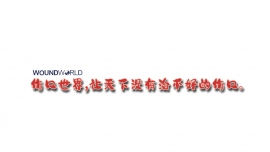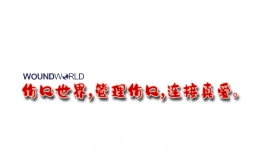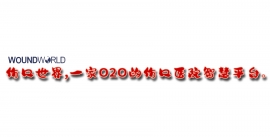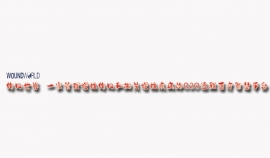
伤口世界

- 星期二, 24 10月 2023
Demonstrating the clinical efficacy of a multi-modality approach to managing various wound aetiologies
The article highlights the major challenge of limb amputation in the Caribbean and its effects on the patient’s quality of life, stressors on the family and the burden on the healthcare system. Four clinical cases are presented with various wound aetiologies and comorbidities; these patients were candidates for limb amputation. A reassessment of the traditional wound management approach paradigmatically shifted to a new strategy. This strategy includes clinically effective, easy-to-apply, and affordable products that help to reduce limb amputation, resulting in limb salvage.
Authors:
Larry G. Baratta and Yvonne Braithwaite Superville
Larry G. Baratta is International Medical Director, Chief Medical Officer - World Wide Wound Care, LLC;
Yvonne Braithwaite is Chief Executive Officer - Rovon Foot and Wound Care Clinic

- 星期二, 24 10月 2023
Demonstrating the clinical efficacy of a multi-modality approach to managing various wound aetiologies
The article highlights the major challenge of limb amputation in the Caribbean and its effects on the patient’s quality of life, stressors on the family and the burden on the healthcare system. Four clinical cases are presented with various wound aetiologies and comorbidities; these patients were candidates for limb amputation. A reassessment of the traditional wound management approach paradigmatically shifted to a new strategy. This strategy includes clinically effective, easy-to-apply, and affordable products that help to reduce limb amputation, resulting in limb salvage.
Authors:
Larry G. Baratta and Yvonne Braithwaite Superville
Larry G. Baratta is International Medical Director, Chief Medical Officer - World Wide Wound Care, LLC;
Yvonne Braithwaite is Chief Executive Officer - Rovon Foot and Wound Care Clinic
- 星期五, 20 10月 2023
USE OF WOUND ANTISEPTICS IN ANTISEPTICS IN PRACTICE
MANAGING THE CHALLENGES AND RISKS OF INFECTION IN WOUND CARE
USE OF DIFFERENT ANTISEPTICS IN PRACTICE
WOUND CLEANSING AND TIPS FOR BEST PRACTICE
GUIDANCE AND PATHWAYS FOR ANTISEPTIC USE
THE IMPORTANCE OF AN ANTIMICROBIAL STEWARDSHIP-FOCUSED APPROACH
EXPERT PANEL
Harikrishna K. R. Nair (Chair), Professor and Head of the Wound Care Unit, Department of Internal Medicine, Kuala Lumpur Hospital, Malaysia
Beata Mrozikiewicz-Rakowska, President of the Polish Wound Management Association, Department of Endocrinology, Medical Centre of Postgraduate Education, Warsaw, Poland
Debora Sanches Pinto, Assistant Physician, Division of Plastic Surgery and Burns, University of São Paulo Faculty of Medicine Clinics Hospital, São Paulo, Brazil
Ewa K. Stuermer, Professor, Surgical Head of the Comprehensive Wound Center, Head of Translational Research, Department for Vascular Medicine, University Hospital Hamburg-Eppendorf, Hamburg, Germany
Johannes Matiasek, Associate Professor and Specialist in Plastic, Reconstructive and Aesthetic Surgery, Medizin am Kärntner Ring, Vienna, Austria
Johanna Sander, Head of Advanced Wound Care, 2 Military Hospital, Cape Town, South Africa
José Luis Lázaro-Martínez, Professor, The Complutense University of Madrid; Clinical Director, Complutense University Podiatric Clinic; Head of Diabetic Foot Unit, University Podiatric Clinic, Madrid, Spain
Karen Ousey, Professor of Skin Integrity, Director for the Institute of Skin Integrity and Infection Prevention, University of Huddersfield, United Kingdom
Ojan Assadian, Medical Director, Hospital Wiener Neustadt, Austria; Professor Emeritus, University of Huddersfield, United Kingdom
Paul J. Kim, Medical Director, University of Texas Southwestern Medical Center; Professor, Department of Plastic Surgery and Orthopaedic Surgery, University of Texas Southwestern, United States
Steven L. Percival, Professor (Honorary), University of Manchester, United Kingdom; CEO and Director, Biofilm Centre, 5D Health Protection Group Ltd, Liverpool, United Kingdom
PUBLISHED BY: Wounds International 108 Cannon Street London EC4N 6EU, UK
Tel: + 44 (0)20 7627 1510 该Email地址已收到反垃圾邮件插件保护。要显示它您需要在浏览器中启用JavaScript。 www.woundsinternational.com
© Wounds International, 2023
The meeting and this document have been supported by B Braun, Bactiguard, Schülke and Urgo Medical.
The views in this document do not necessarily reflect those of the sponsors.
How to cite this document: Nair HKR et al (2023) International Consensus Document: Use of wound antiseptics in practice. Wounds International. Available online at www.woundsinternational. com

- 星期四, 19 10月 2023
Building the business case for shared wound care: a cost-benefit case for service providers
Chronic wounds are a substantial burden on healthcare systems worldwide, with their management accounting for a significant portion of healthcare budgets. Given the rising prevalence of wounds and the growing strain on healthcare resources, there is an urgent need for more efficient treatment options in wound care.
Authors:
Zena Moore and Sebastian Probst
Zena Moore PhD, MSc, FFNMRCSI, PG Dip, RGN is Professor and Head of the School of Nursing and Midwifery, Director of the Skin Wounds and Trauma Research Centre, Royal College of Surgeons in Ireland, University of Medicine and Health Sciences, Dublin, Ireland;
Sebastian Probst DClinPrac, MNS, BNS, RN is Full Professor of Tissue Viability and Wound Care, Geneva School of Health Sciences, HES-SO University of Applied Sciences and Arts Western Switzerland, Care Directorate, University Hospital Geneva, Switzerland and Adjunct Professor, Faculty of Medicine, Nursing and Health Sciences, Monash University, Melbourne, Australia
* The data set used to create the 3.5 billion hour model (Moore et al, 2022), revealed that globally, 4,011,188,929 hours are spent on dressing changes in the community per year. ALLEVYN LIFE Dressing as part of a shared wound care approach has the potential to release 10.8% (433,208,404) of these hours (Joy et al, 2015; Moore et al, 2022; Rossington et al, 2013; Simon and Bielby, 2014; Tiscar-González et al, 2021).

- 星期三, 18 10月 2023
Paving the way for effective wound care education for the non-specialist — developing five evidence-based wound type specific pathways
The Wound Care Pathway was developed in 2020/21 to provide a practical, evidence-based step-by-step approach towards wound healing (Dowsett et al, 2021). Healthcare providers who use the pathway asked for more detailed guidance for specific wound types. A group of wound care experts, comprised of physicians, nurses and researchers, undertook a process to expand the international consensus on wound healing by developing wound type-specific pathways for diabetic foot ulcers, venous leg ulcers, skin tears, pressure injuries/pressure ulcers and surgical wound dehiscence. The objective was to take complex research evidence and translate it into simple and practical treatment guidance for the non-specialist, for the five most common wound types. The systematic approach to wound care provided in the wound care pathway and in the wound type specific pathways is designed with the goal of achieving a shorter way to wound healing by helping healthcare providers focus on healing wounds not just dressing wounds.
Authors:
Terry Swanson, Kimberly Bain,Caroline Dowsett, Jose Ramon March Garcia, Emily Greenstein, David Keast, Long Zhang, Mark Bain, Hester Colboc and Christoffer Hoffmann
Terry Swanson is Nurse Practitioner
Wound Management, Warrnambool, Vic. Australia;
Kimberly Bain is Senior Partner - Consensus Building, BainGroup Consulting, Canada;
Caroline Dowsett is Nurse Specialist Tissue Viability, East London NHS Foundation Trust London, UK;
Jose Ramon March Garcia is Vascular Surgeon Getafe University Hospital (Madrid), Spain;
Emily Greenstein is Certified Nurse Practitioner at Sanford Health in Fargo, USA;
David Keast is Associate Scientist, Lawson Health Research institute, Canada;
Long Zhang is Vascular Surgeon, Wound Healing Center, Peking University Third Hospital,China;
Mark Bain is Senior Partner, Data Strategy, BainGroup Consulting, Canada;
Hester Colboc is Dermatologist & Gerontologist, Rothschild Hospital, Paris, France;
Christoffer Hoffmann is Senior Medical Specialist, Coloplast A/S, Denmark

- 星期二, 17 10月 2023
运动训练对老年糖尿病周围神经病变患者平衡功能影响的Meta 分析
臧娴,白姣姣,王怡
复旦大学附属华东医院护理部,上海200040
[摘要]目的评价运动训练对老年糖尿病周围神经病变(DPN)患者平衡功能的影响。方法计算机检索Cochrane Library、JBI、MEDLINE、EMbase 、PubMed、 Web of Science、中国生物医学文献数据库( CBM)、中国知网(CNKI) 及万方数据库中(自建库至2017年2月5日)关于运动训练对老年DPN患者平衡功能影响的随机对照试验( randomized controlled tria,RCT), 由2名研究员按纳入和排除标准筛选文献、提取资料并评价质量,然后采用RevMan 5.3软件进行Meta分析。结果共纳人6个RCT, 373例老年DPN患者。Meta分析结果显示,运动训练可延长老年DPN患者的睁眼/闭眼单足站立时间[WMD=3.8, 95%CI (2.38 ~5.22), P<0.0000; WMD= 1.66, 95%CI (0.86 ~2.46),P<0.0001],增加Berg平衡功能量表得分[WMD=1.34, 95%CI (0.93~ 1.75), P<0.000],缩短计时起立一步行测试时间[WMD=-1.37. 95%CI (-1.69~-1.05), P<0000]。结论运动训练可显著改善老年DPN患者的静态和动态平衡功能,临床上应注重对老年DPN患者进行运动训练,从而改善其平衡功能,降低跌倒风险。
[关键词]糖尿病;周围神经病变;运动训练;平衡功能; Meta 分析
Effect of Exercise Training on Balance Function of the Elderly with Diabetic Peripheral Neuropathy: A Meta Analysis
Zang Xian, Bai Jaojao*,Wang Yi
Department of Nursing, Huadong Hospital Afiliated 10 Fudan University, Shanghai, 200040. P. R. China
*Corresponding author: Bai Jiaojiao, E-mail: bjj163163@163. com
[ABSTRACT] Objective To evaluate the effect of exercise training on the balance function of the elderly with diabetic peripheral neuropathy (DPN). Methods Papers with randomized controlled trials (RCT) involving the effect of exercise training on the balance function of the elderly with DPN, published since the setup of the databases to Feb.5 th, 2015, were searched in Cochrane Library, JBI, MEDLINE, EMbase, PubMed, Web of Science, CBM, CNKI and WanFang Data; according to the inclusion and exclusion criteria, the papers were screened by 2 researchers; data were extracted and the meth-
odological quality of the included was asessed. Result In total, 6 RCTs involving 373 elderly with DPN were included; Meta analysis indicated that after exercise training, the elderly with DPN had a longer time of one leg stance with eyes opening (WMD=3.8, 95%CI2.38-5.22, P<0.00001), as well as a longer time of one leg stance with eyes closing (WMD= 1.66,95% CI 0.86-2.46, P<0.0001); and the exercise training increased the scores of Berg balance scale (WMD= 1.34,95%CI0.93-1.75, . P<0.00001) and shortened the time of up and go tests (WMD=-1.37, 95%CI -1.69--1.05,P<0.00001). Conclusion
Exercise training can obviously improve the static and dynamic balance function of the elderly with DPN; more atention should be paid to exercise training in clinic so as to improve the balance function of the elderly and decrease the risk of fllig.
[KEYWORDS] diabetes; peripheral neuropathy; exercise training; balance function;Meta analysis
